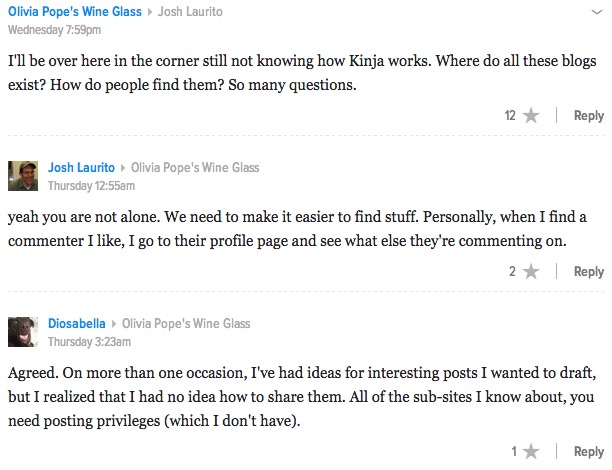Platisher — the ugliest journalism word of 2014 — lives on in 2015. (Despite the fact that I can’t hear it without thinking: “Feather-footed through the plashy fen passes the questing vole.”) It survives because it’s useful, describing a very of-the-moment idea: an online outfit that is both a publisher (paying staff or other contributors to write original content) and a platform (an open space for anyone to publish whatever they’d like). Think Medium, which both pays a small group of freelancers good, sometimes national-magazine-level money for edited pieces — but also lets anyone post their weekly shopping list with the same sort of bravura presentation.
One of the most interesting platishers (ugh) is Gawker Media, which host both publications (Gawker, Gizmodo, Deadspin, etc.) and an open platform named Kinja, on which anyone can post. Gawker Media boss Nick Denton has spoken often of his ambitions for Kinja as a shared platform where the audience would produce work at least as valuable as his staff’s.Over the holidays, Gawker Media’s head of data and analytics Josh Laurito posted a list of the most successful “independent” posts of the year. Here’s how he defined it:
So what’s an independent post? Obviously I’m excluding anything on Gawker Media’s own sites and any of our partners (you can see a list of our blogs and our partners at the Kinja homepage). I’m also excluding people directly associated with Gawker, though I am including people associated with the partners, if that makes sense.
The list includes some good stuff! (I remember enjoying these two when they were posted.) But the audience metrics for them have to be a little disappointing. Here’s how many pageviews the 9 most successful posts got:
226,864
172,896
160,647
125,529
114,507
94,333
74,553
65,849
64,257
Now, there are plenty of news sites that would love numbers like those. But by Gawker Media standards, they’re pretty scrawny. Those are the top independent performers for all of 2014; in a couple of minutes of clicking, I found more a dozen Gawker Media staff-produced posts published just yesterday that had enough pageviews to get on that list. (And I’m sure there are at least a dozen more — I just stopped counting after a while. This one post was over 400,000 in its first 11 hours since posting.) A reminder that just because you build the platform, it doesn’t necessarily mean the audience will come a-postin’. Discoverability, for one thing, is an issue:

Leave a comment